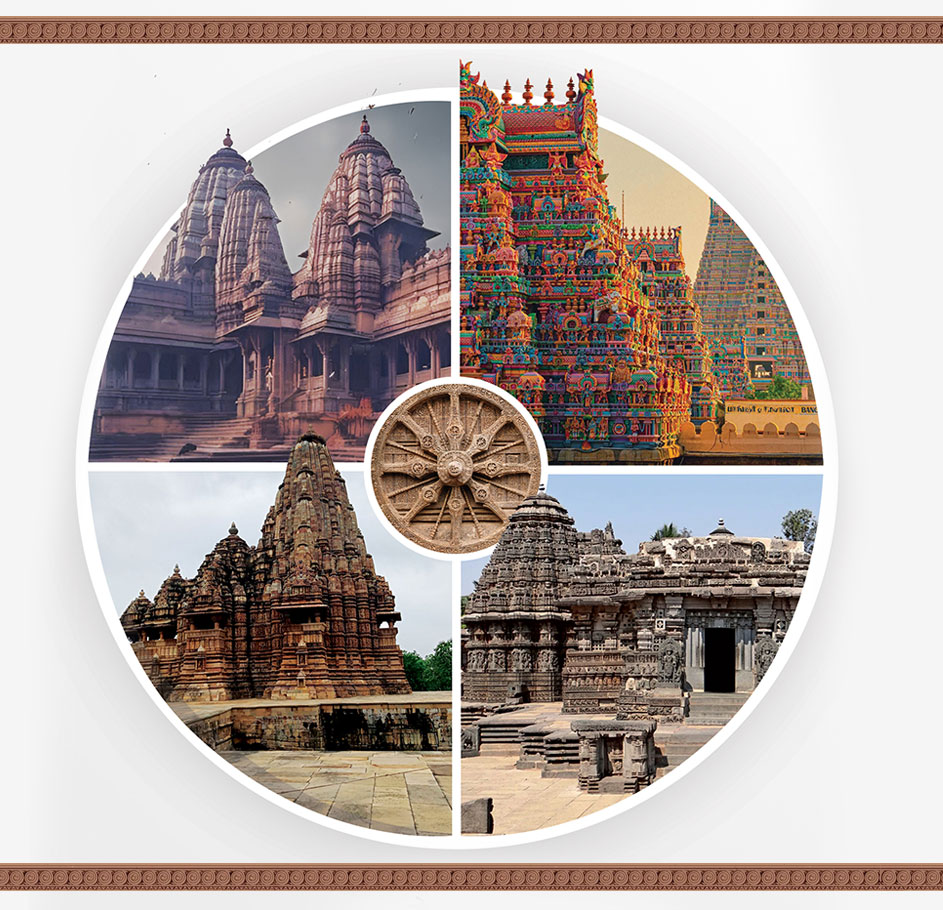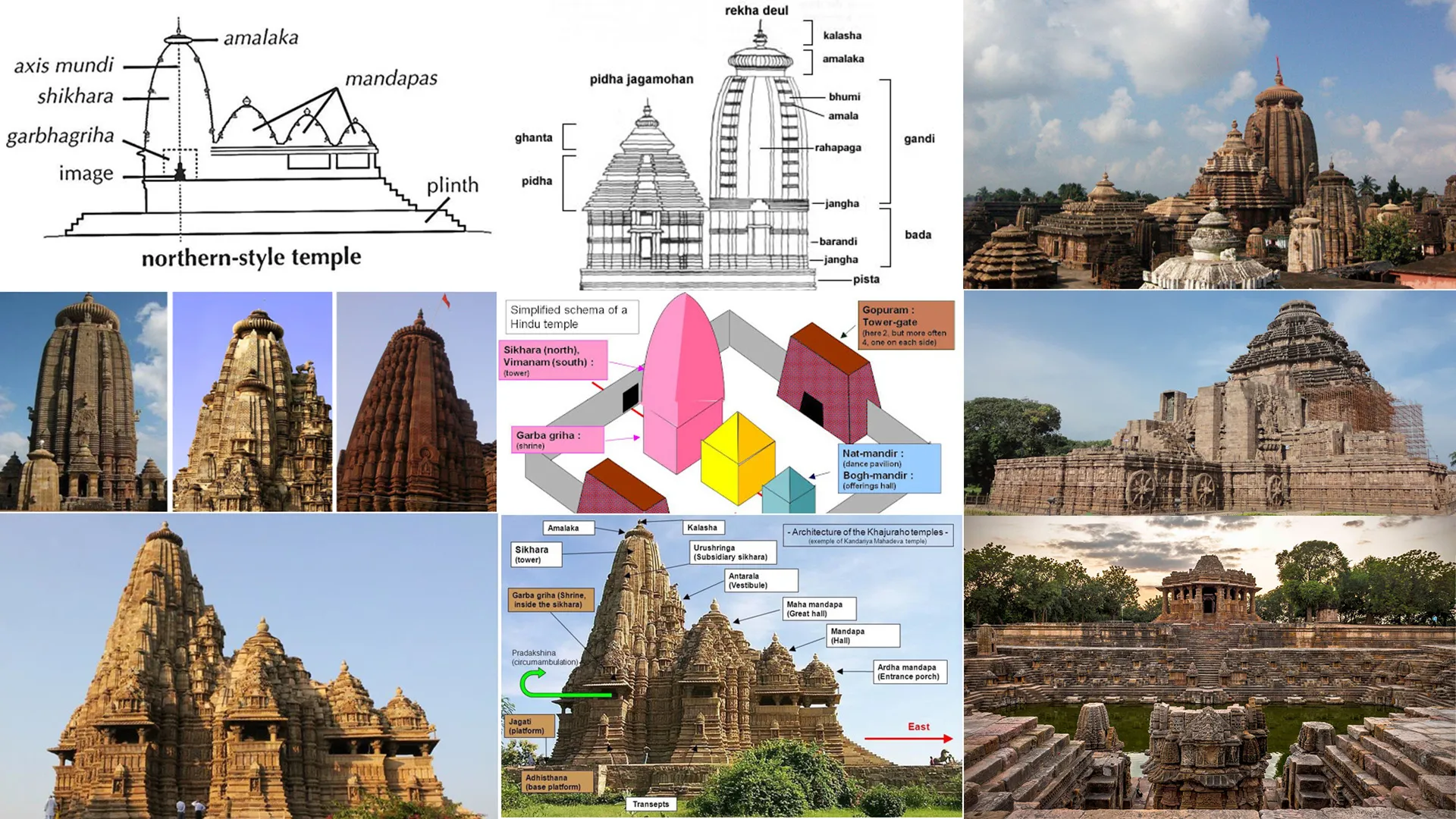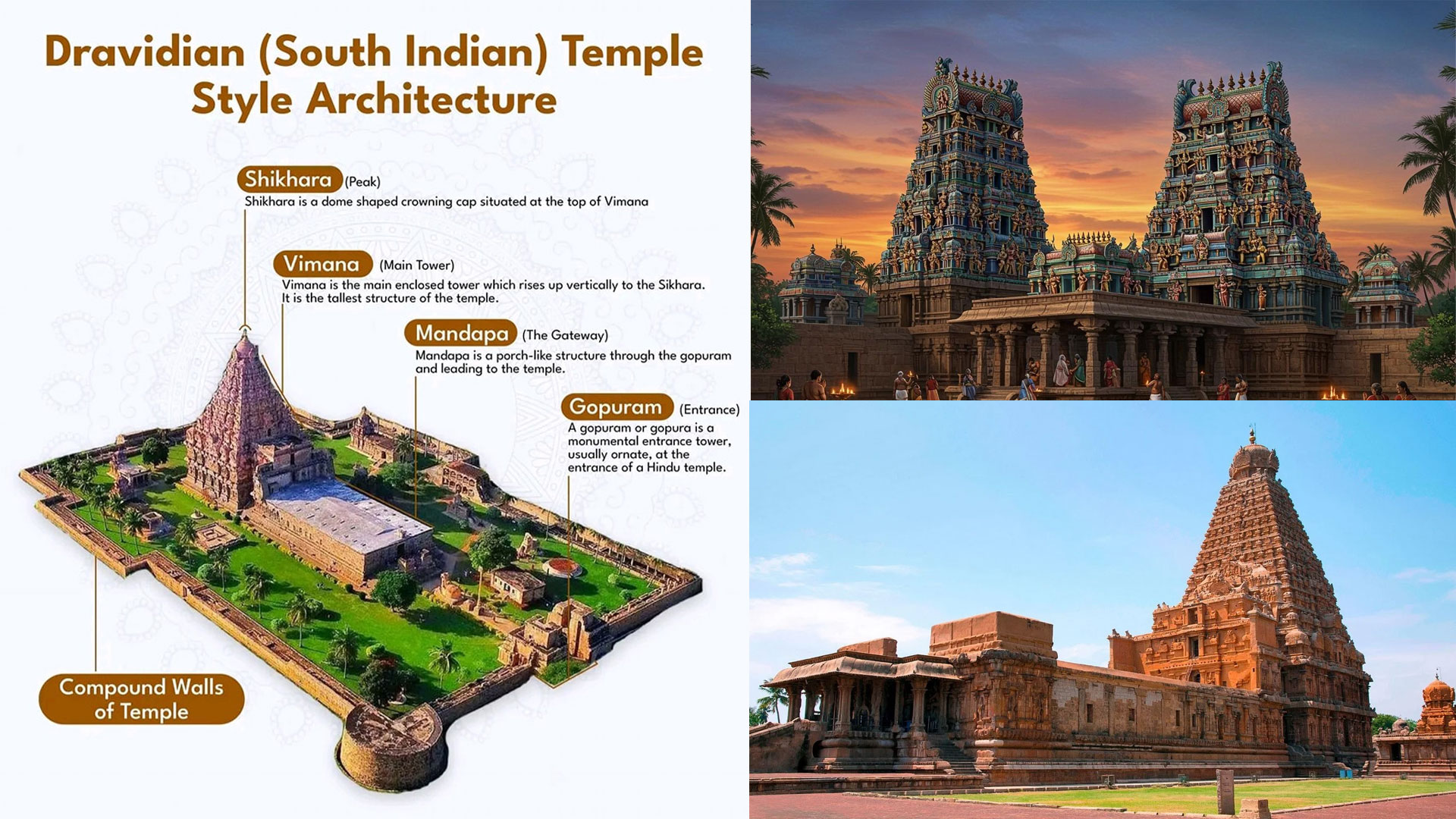
India’s religious devotion, cultural diversity, and artistic brilliance are all profoundly expressed in its temple architecture. Over thousands of years, it has changed, incorporating spiritual symbolism, dynastic patronage, and regional styles.
In general, there are three primary styles of Indian temple architecture: Vesara (a combination of the two styles), Dravida (South Indian style), and Nagara (North Indian style). Tall, curved towers known as shikharas are a defining feature of the Nagara architectural style, which is found in temples like Khajuraho and Konark. The Dravida style, which is popular in Tamil Nadu, on the other hand, is characterized by enclosed courtyards, elaborately carved gopurams (gateway towers), and pyramid-shaped towers called vimanas, as seen in temples like Brihadeeswarar and Meenakshi.
Chalukyan and Hoysala temples exhibit the Vesara style, which was primarily developed in the Deccan and combines the two traditions. For example, the architecture of Hoysala is well known for its elaborate carvings and star-shaped platforms, such as those found in Belur and Halebidu.
Temples serve as centers of culture in addition to being places of worship. Sacred geometry, symbolism, and stories from epics like the Ramayana and Mahabharata are all incorporated into their architecture. Every component, from the mandapa (pillared hall) to the garbhagriha (sanctum), is intended to produce a divine experience that unites the spiritual and the material worlds.

The Nagara style, seen in temples like Khajuraho and Konark, is characterized by tall, curvilinear towers called shikharas.

Dravida style, prominent in Tamil Nadu, features pyramid-shaped towers called vimanas, richly sculpted gopurams (gateway towers), and enclosed courtyards, as seen in temples like Brihadeeswarar and Meenakshi.

The Vesara style, developed mainly in the Deccan region, merges both traditions, visible in Chalukyan and Hoysala temples.